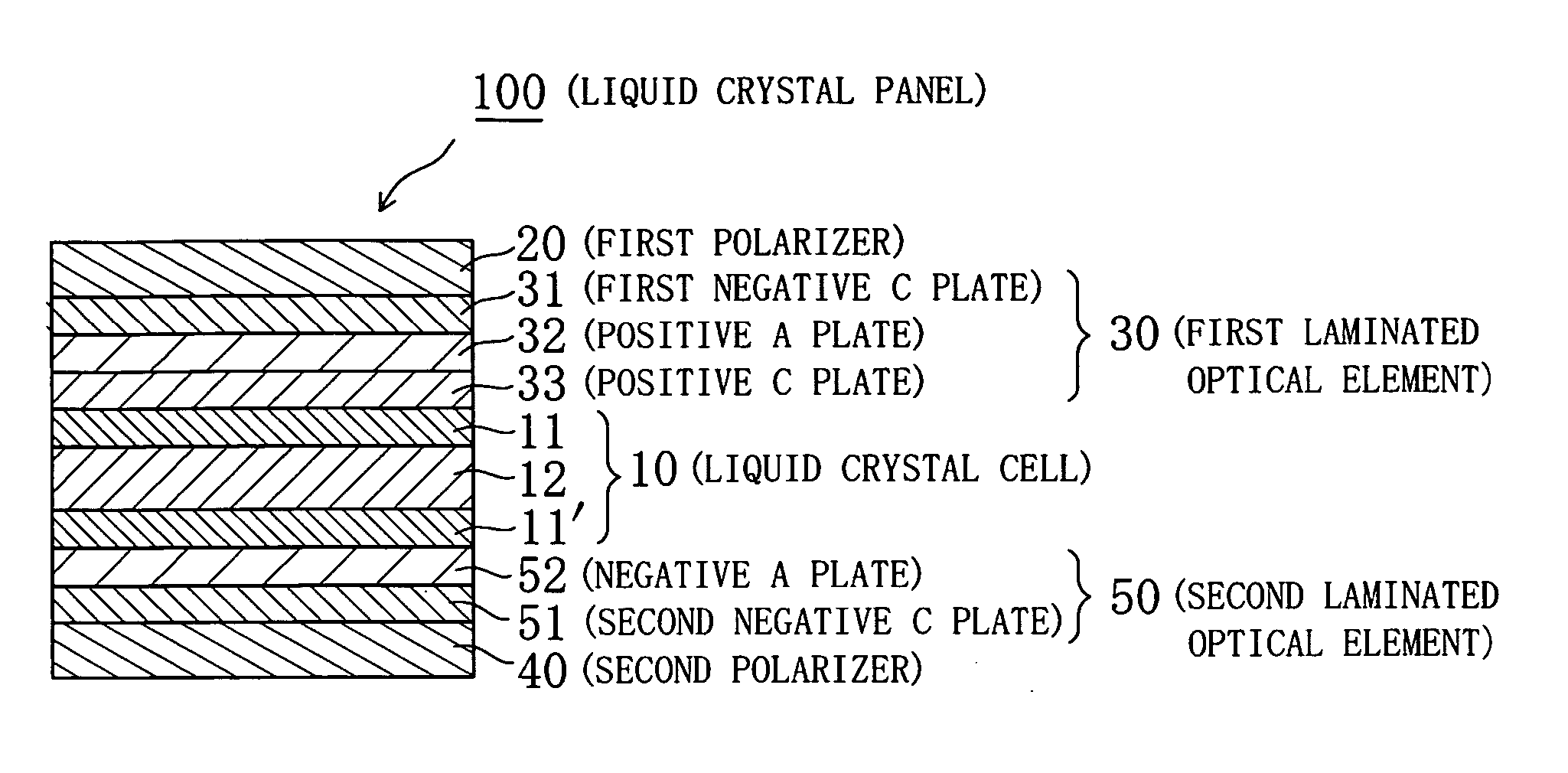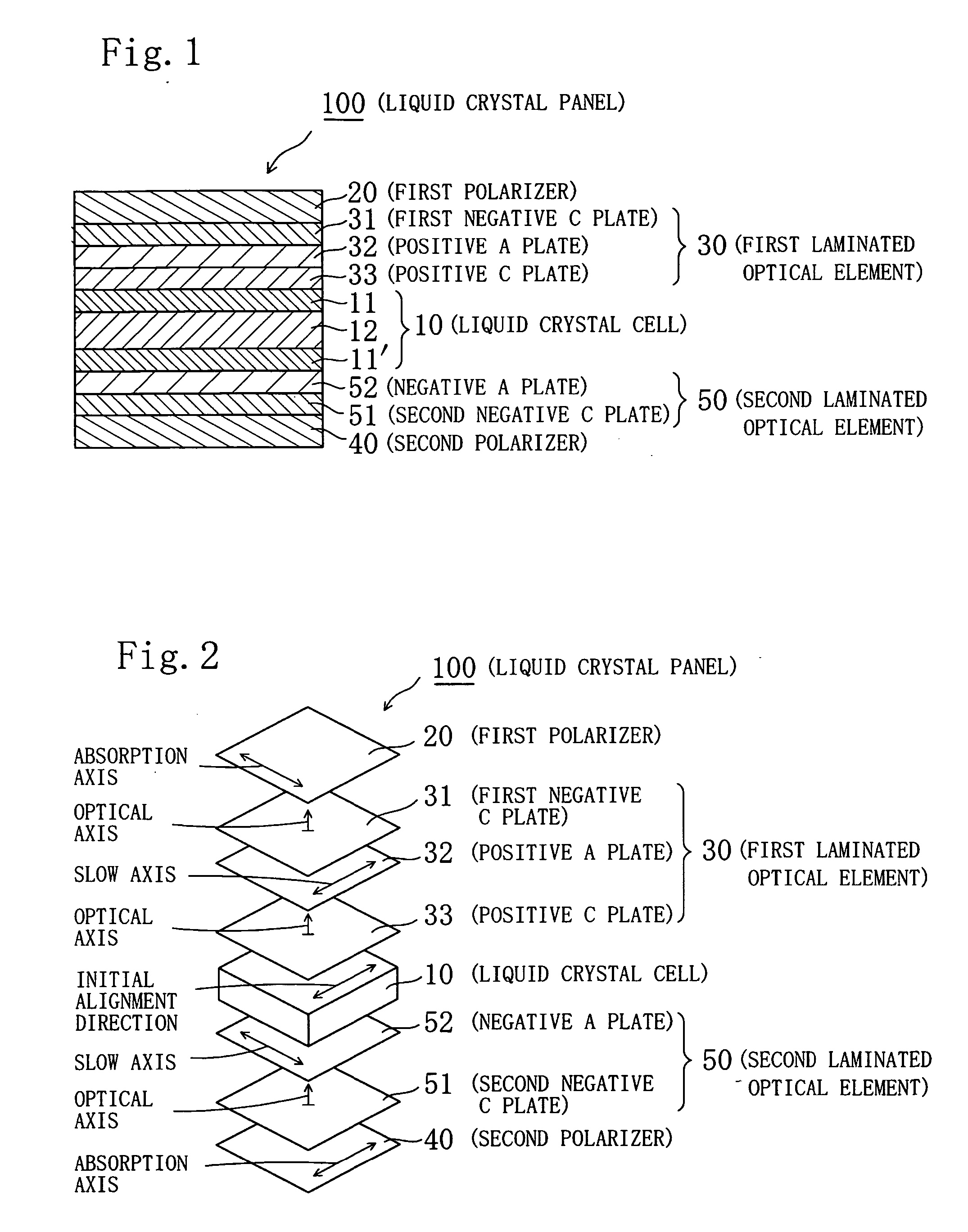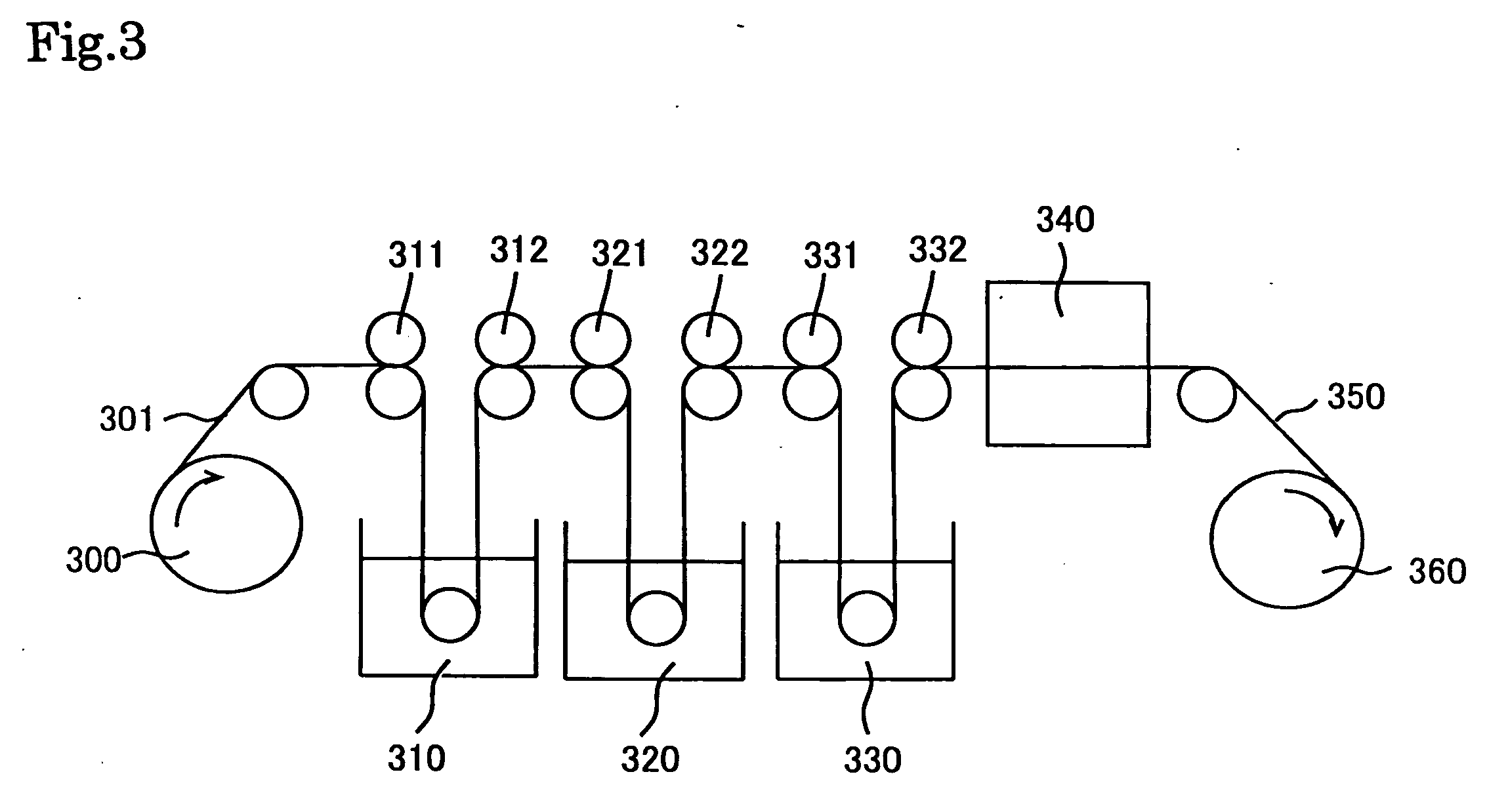Liquid Crystal Panel, Liquid Crystal Television, and Liquid Crystal Display Apparatus
- Summary
- Abstract
- Description
- Claims
- Application Information
AI Technical Summary
Benefits of technology
Problems solved by technology
Method used
Image
Examples
reference example 1
Production of Retardation Film to be Used for Negative C Plate
[0296] 17.7 parts by weight of a polyetheretherketone-based resin (weight average molecular weight=520,000, average refractive index=1.56) represented by the following formula (II) is dissolved in 100 parts by weight of methyl isobutyl ketone, to thereby prepare a resin solution having a total solid content of 15 wt %. The resin solution was applied uniformly to a surface of a commercially available polyethylene terephthalate film [“Lumirror S27-E”, trade name, available from Toray Industries, Inc. (thickness of 75 μm)] by using a rod coater, and the whole was dried in an air-circulating thermostatic oven at 135° C.±1° C. for 5 minutes, and then in an air-circulating thermostatic oven at 150° C.±1° C. for 10 minutes, to thereby evaporate the solvent. The polyethylene terephthalate film was peeled off, to thereby obtain a polymer film containing as a main component a polyetheretherketone-based resin. This polymer film was...
reference example 2
[0297] A polymer film containing as a main component a cycloolefin-based resin obtained through hydrogenation of a ring-opened polymer of a norbornene-based monomer [“Arton F”, trade name, available from JSR Corporation (thickness of 100 μm, glass transition temperature=171° C., average refractive index=1.51, Re[590]=5 nm, Rth[590]=18 nm)] was stretched 1.2 times in a longitudinal direction and 1.2 times in a transverse direction in an air-circulating thermostatic oven at 190° C.±2° C. by using a biaxial stretching machine (a longitudinal and transverse sequential biaxial stretching). The obtained stretched film was referred to as a retardation film A-2. Table 1 shows the properties of the retardation film A-2.
reference example 3
[0298] A commercially available polymer film containing as a main component triacetyl cellulose [“Fujitac”, trade name, available from FujiPhoto Film, Co., Ltd. (thickness of 80 μm, average refractive index=1.48)] was used as it is. This polymer film was referred to as a retardation film A-3. Table 1 shows the properties of the retardation film A-3.
TABLE 1ReferenceReferenceReferenceExample 1Example 2Example 3Retardation filmA-1A-2A-3Thickness (μm)3.68080Transmittance (%)929292Re[590] (nm)0.20.61.0Rth[590] (nm)305480C[590]× 10−12 (m2 / N)78.317.85.0
PUM
 Login to View More
Login to View More Abstract
Description
Claims
Application Information
 Login to View More
Login to View More - R&D
- Intellectual Property
- Life Sciences
- Materials
- Tech Scout
- Unparalleled Data Quality
- Higher Quality Content
- 60% Fewer Hallucinations
Browse by: Latest US Patents, China's latest patents, Technical Efficacy Thesaurus, Application Domain, Technology Topic, Popular Technical Reports.
© 2025 PatSnap. All rights reserved.Legal|Privacy policy|Modern Slavery Act Transparency Statement|Sitemap|About US| Contact US: help@patsnap.com



